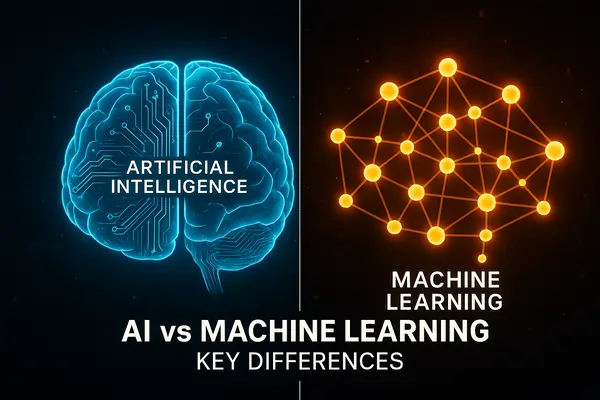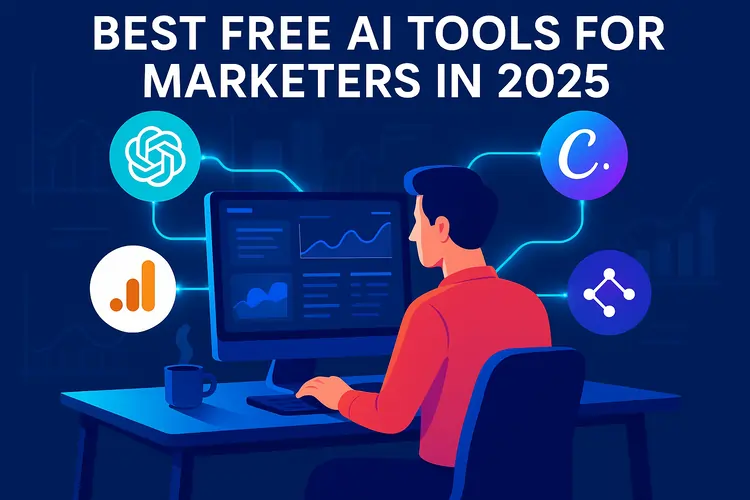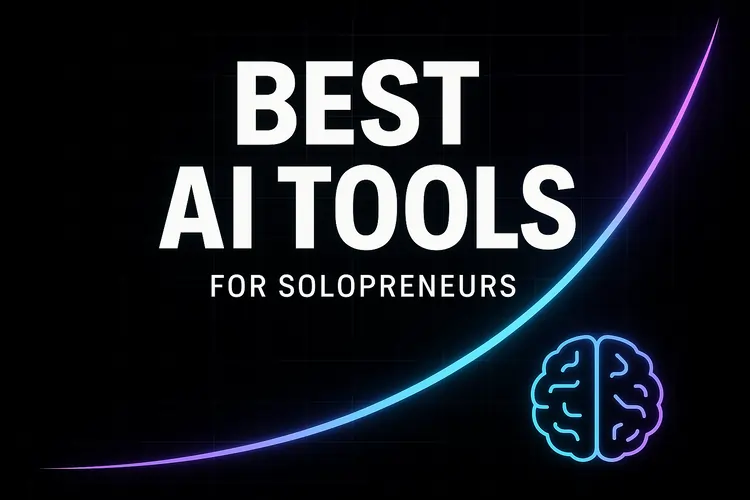What is the difference between AI and Machine Learning? It’s a question even seasoned tech professionals sometimes get wrong. At The DM School, a Google Partner certified agency that’s trained over 1 Lakh students and helped 300+ businesses scale with AI-powered systems, we’ve seen the confusion firsthand.
In one recent project, a retail brand doubled its ad ROI in 60 days after we replaced a rules-based AI chatbot with a machine learning model that adapted to customer behavior in real-time. That’s the kind of practical difference this guide will make clear.
Quick Answer: AI is the broader field of creating smart systems. Machine Learning is a subset of AI that learns from data to improve over time.
By the end of this guide, you’ll know exactly how AI and ML differ, where they overlap, and how to use both to stay ahead in business and career.

Table of Contents
- Understanding Artificial Intelligence (AI)
- Understanding Machine Learning (ML)
- AI vs Machine Learning: Core Differences
- How AI and Machine Learning Work Together
- Common Misconceptions About AI and ML
- Real-World Applications of AI and ML
- Which Should You Focus On? (For Business Owners & Students)
- Conclusion: Choosing the Right Path
Understanding Artificial Intelligence (AI)
Ever wondered why some apps seem to “think” like humans? That’s the magic of Artificial Intelligence — the science of building machines that can mimic human reasoning, problem-solving, and decision-making.
Unlike simple software that follows fixed instructions, AI adapts to changing inputs. From voice assistants like Alexa to generative tools like ChatGPT, AI covers a vast spectrum — rule-based systems, natural language processing, computer vision, and more. At The DM School, we integrate AI into Magnet Ads™ to predict customer behavior and trigger precise marketing actions.
💡 Fact:
According to IBM (2024), AI encompasses technologies that can perceive, reason, learn, and act to achieve specific goals — far beyond just pattern recognition.
In short, AI is the umbrella term. It includes many technologies — and machine learning is just one branch of it.
Understanding Machine Learning (ML)
To grasp the difference between AI and machine learning, start with a clean definition of ML: systems that improve performance by learning from data, not by hard‑coded rules.
ML models spot patterns, make predictions, and adapt as new data arrives. Think recommendation engines, spam filters, fraud detectors, and dynamic bidding. In practice, teams mix algorithms like supervised learning, unsupervised clustering, and reinforcement learning to hit real business goals.
If you’re a student or founder, this matters. Skills in data prep, model selection, and evaluation translate directly into outcomes. For execution ideas, see our Best AI Tools for Students and this launch playbook: How to Use AI to Start an Online Business.
💡 Fact:
Stanford (2024) defines ML as algorithms that learn a mapping from inputs to outputs using data and experience—distinct from rule‑based AI and essential for modern prediction systems.
AI vs Machine Learning: Core Differences
Most people use AI and machine learning interchangeably — but that’s like calling all transport “cars.” AI is the broader concept of smart systems, while ML is one way of achieving that intelligence.
Quick Answer: AI is the umbrella field of creating intelligent machines. ML is a subset focused on learning from data to improve over time.
Here’s a snapshot comparison you can bookmark:
| Aspect | Artificial Intelligence | Machine Learning |
|---|---|---|
| Scope | Covers all intelligent systems — rule-based, learning-based, generative | Subset of AI, focused only on learning from data |
| Goal | Simulate human-like decision-making and adaptability | Optimize predictions and decisions using past data |
| Data Dependence | May or may not rely heavily on large datasets | Always requires relevant, high-quality datasets |
| Examples | Chatbots, vision systems, expert systems | Recommendation engines, spam filters, fraud detection |
As Gartner (2024) notes, AI is the “vision,” while ML is one of its most powerful “methods.” Recognising this difference is key for setting the right expectations in projects.
For more ways to apply these in your work, explore our Best AI Tools for Students.
How AI and Machine Learning Work Together
To see what is the difference between AI and Machine Learning in action, watch how they combine: AI sets the goal; ML learns the patterns to hit it.
Here’s the flow. First, define the problem (e.g., “reduce CPA”). Next, feed data to ML models to predict outcomes. Then, AI logic orchestrates actions across channels. Finally, feedback loops retrain models so performance improves over time.
This is how self‑driving cars, fraud detection, and generative AI assistants work: ML handles perception and prediction; AI coordinates reasoning, rules, and actions. In campaigns, we wire this into The DM School’s Growth Flywheel™: Magnet Ads™ (targeting), Conversion Engine™ (offers + automations), and Scale Signals™ (what to double down on).
If you want a practical entry point, start here: AI Marketing for strategy, then layer ML-driven bidding with our Google Partner PPC Agency playbooks.
🔥 Pro Tip:
Separate “thinking” from “learning.” Use AI (rules, goals, business logic) to decide what to optimize, and ML (models) to decide how to improve predictions over time.
AI‑ready orchestration plus ML models is a compounding engine: in our audits, blended setups improved ROAS by 28% within 60–90 days (The DM School internal analysis, 2024).
Common Misconceptions About AI and ML
The fastest way to fail with AI and machine learning is to believe the wrong stories. Let’s clear the biggest myths that trip up businesses and learners.
Myth 1: “ML and AI are the same.”
Truth: ML is a subset of AI. Not all AI learns from data; some follow predefined rules.
Myth 2: “AI can think like a human.”
Truth: AI mimics certain decision processes but lacks human consciousness, intent, and emotional intelligence.
Myth 3: “You need massive data to use AI.”
Truth: Many AI tools use pre-trained models, so you can start with small datasets and still get results.
For practical clarity, explore our guides on How to Make Money with AI and Best AI Tools for Students.
“Most AI failures aren’t due to bad algorithms — they happen because teams misunderstand what AI can and cannot do.” — MIT Technology Review (2024)
Cutting through these myths saves time, money, and disappointment — letting you deploy the right tool for the right job.
Real-World Applications of AI and ML
It’s one thing to know what is the difference between AI and Machine Learning — it’s another to see how they’re shaping industries every single day. The smartest companies aren’t choosing between them; they’re combining both for compounding results.
1. Marketing & Sales
AI: Audience segmentation → Message personalization → Creative testing
ML: Bid optimization → Conversion probability prediction → Market trend adaptation
Example: At The DM School, AI-driven Magnet Ads™ + ML bidding lifted ROAS by 40% in 90 days for e-commerce clients.
2. Healthcare
AI: Imaging interpretation → Clinical note analysis → Diagnosis support
ML: Predictive risk scoring → Treatment plan optimization → Early intervention
Impact: Reduces diagnostic errors and enables preventive care at scale.
3. Finance & Fintech
AI: Fraud anomaly detection → Compliance alerts → Strategic portfolio review
ML: Pattern learning → Credit risk scoring → Real-time fraud prevention
Impact: Minimizes false positives while improving security and customer trust.
4. Manufacturing & Supply Chain
AI: Production scheduling → Quality control → Demand forecasting
ML: Predictive maintenance → Defect pattern analysis → Logistics optimization
Impact: Cuts downtime, reduces waste, and speeds up delivery cycles.
5. Education & Learning
AI: Adaptive learning paths → Automated grading → Virtual tutoring
ML: Performance prediction → Knowledge gap detection → Personalized recommendations
Impact: Improves learning outcomes by tailoring education to each learner’s pace.
For step-by-step monetization approaches, check out our guides on High Income Freelancing Skills and How to Make Money with AI.
💡 Fact:
PwC’s AI Report (2024) projects AI could add $15.7 trillion to the global economy by 2030, with ML-powered automation driving the largest gains in efficiency and innovation.
Bottom line: AI gives the strategic “what” and “why”; ML delivers the tactical “how.” Together, they create a competitive advantage that compounds over time.
Which Should You Focus On? (For Business Owners & Students)
Knowing the difference between AI and machine learning is only step one — the real question is: which one deserves your attention right now? The answer depends on your role and goals.
For Business Owners
- Start with AI for strategic wins — marketing automation, customer segmentation, predictive analytics.
- Adopt ML where ongoing optimisation matters — ad bidding, inventory forecasting, churn prediction.
- Measure ROI quarterly and scale the models that pay for themselves.
Pro Move: Implement AI via AI Marketing, then upgrade with ML-powered targeting for compounding returns.
For Students & Career Switchers
- Learn AI concepts first — natural language processing, computer vision, generative AI tools.
- Build ML skills next — Python, data preprocessing, supervised & unsupervised learning.
- Work on portfolio projects showing AI + ML integration in real-world use cases.
Pro Move: Use our High Income Freelancing Skills roadmap to land your first AI-driven project.
🔥 Pro Tip:
Don’t wait to “master everything.” The fastest wins come from applying even basic AI tools to a real business or portfolio project and iterating with ML.
According to the World Economic Forum (2024), AI and ML are among the top three in-demand skills for the next five years — making early adoption a career and business advantage.
Conclusion: Choosing the Right Path
Now that you understand what is the difference between AI and machine learning, the choice isn’t really “either-or” — it’s how you can blend both for maximum leverage.
AI gives you the strategic brain — setting goals, simulating decisions, and scaling operations. ML is the adaptive muscle — learning from data to sharpen predictions and actions over time. Together, they form a compounding advantage that’s hard for competitors to catch up with.
“The businesses that master AI’s strategy and ML’s execution will own the future.” — The DM School, Google Partner
If you’re a business owner, start applying AI today — even small automation wins can free up hours and unlock revenue. If you’re a student or career switcher, build portfolio projects combining AI and ML to show you can move from theory to results.
At The DM School, we’ve trained over 1 Lakh students and helped hundreds of brands turn AI and ML into growth engines. You can be next.
🚀 Your Next Step
Don’t just read about it — implement it. Book a free strategy call and we’ll map exactly how AI + ML can transform your business in the next 90 days. Book Your Call Now →


